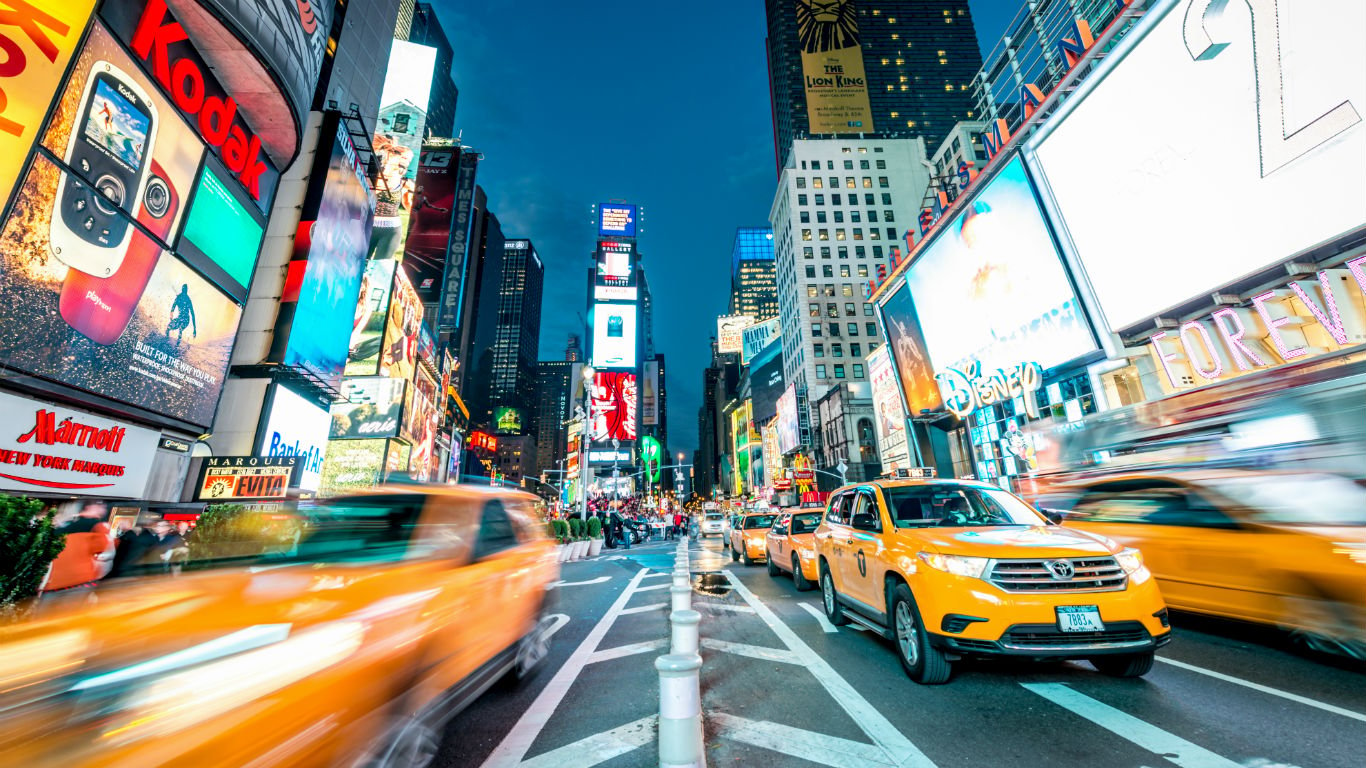

Known as The City That Never Sleeps, it is not surprising that New York has recently appointed a night mayor — a public servant employed to govern the city’s nighttime activities. But the nation’s largest city is not the only place with a nightlife. As the sun sets, night brings to all urban centers an entirely different population with a very different set of characteristics.
In recent years, there has been a resurgence of young, college graduates moving to the downtowns of major cities. While the precise reasons for the shift from suburbanization to urbanization among young professionals are up for debate, one pull factor is the large number of entertainment and nightlife amenities concentrated in city centers.
A growing number of academics and urban planners have turned their attention in the last few decades towards the entertainment and nightlife ecosystem, or night economy. Although definitions of the nighttime economy vary and a lack of data makes the sector difficult to study on a large scale, most researchers agree that the night economy runs from around 6 p.m. to 6 a.m. and encompasses those who enjoy the night, and work during the night.
To highlight the cities investing in nocturnal governance, 24/7 Wall St. considered several factors related to the night economies of the 15 largest U.S. metropolitan areas using data from the U.S. Bureau of Labor Statistics, the U.S. Census Bureau, and other sources.
Click to see the night economies of America’s biggest cities.
Click here to see our detailed findings and methodology.
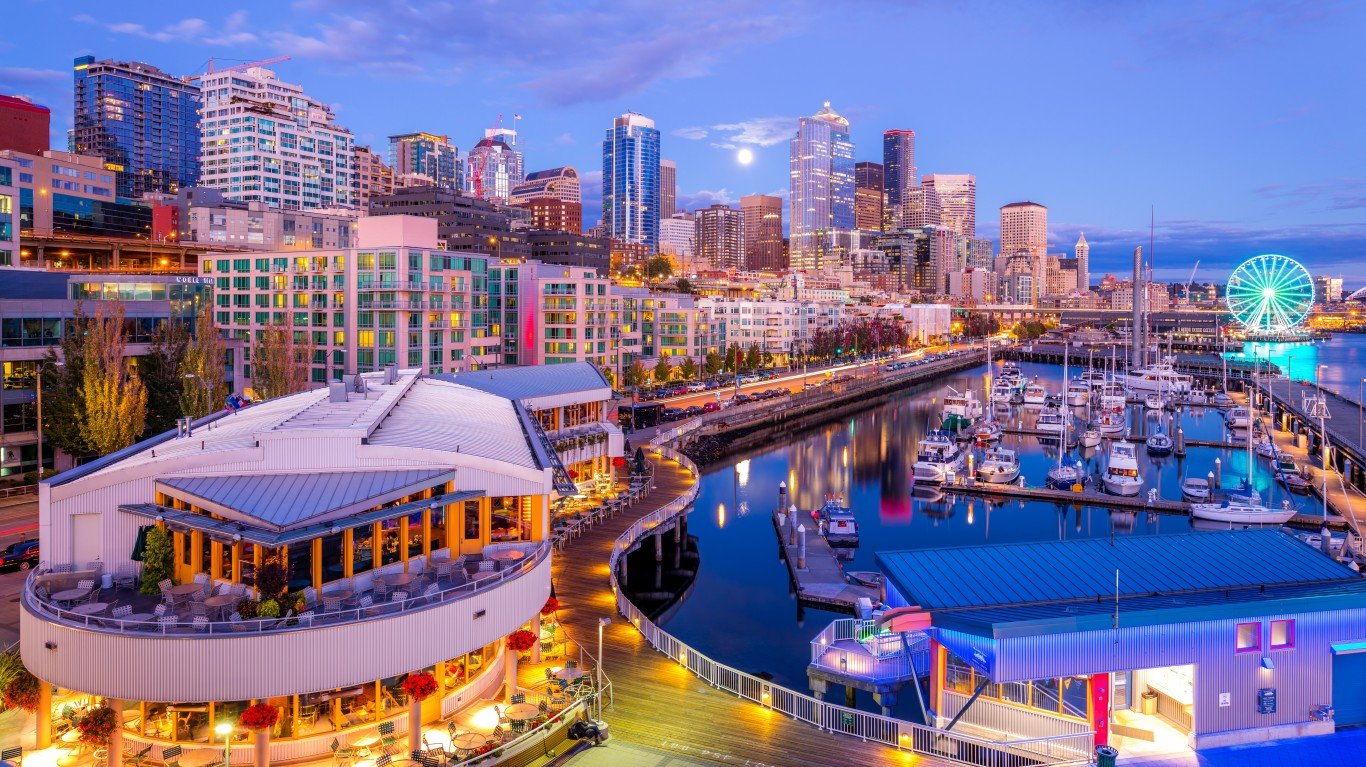
1. Seattle-Tacoma-Bellevue, WA
> Nighttime industries as share of employment: 2.2%
> Most concentrated nighttime industry: Dance companies (396 employees)
> Total population: 3.9 million (586 per sq. mi.)
Seattle is one of several major U.S. cities that in recent years has designated a night mayor or nightlife advocate. Since December 2016, the City of Seattle has employed a nightlife business services advocate, whose responsibilities include helping nightlife establishments navigate the permit and zoning process and ultimately stay in business. The nightlife business services advocate has also organized sexual harassment and opiate overdose trainings, and worked with the transportation department to manage late-night ride shares.
The nightlife business services advocate has also argued against an arcane state tax on aerobics and jazzercise studios that is being applied to music venues. Dance companies are the most concentrated nighttime industry in Seattle, followed by mobile food services.
[in-text-ad]
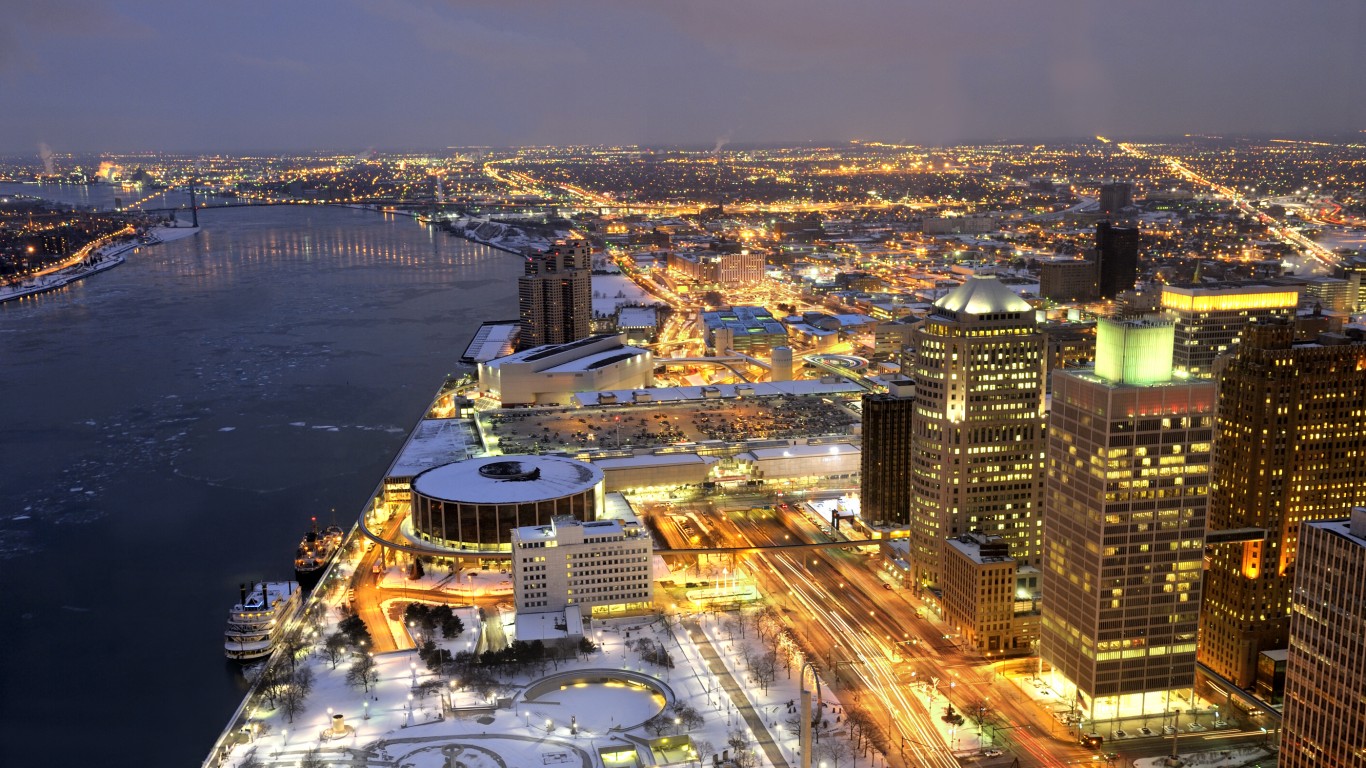
2. Detroit-Warren-Dearborn, MI
> Nighttime industries as share of employment: 1.6%
> Most concentrated nighttime industry: Caterers (4,754 employees)
> Total population: 4.3 million (1,105 per sq. mi.)
Detroit is one of several U.S. metro areas where local government officials are making an effort to manage the nighttime economy. Since May 2018, the City of Detroit has employed a Night Time Economy Ambassador, whose job is to manage and improve relations between businesses operating at night, residents, and government.
One particular challenge to the planning of a 24-hour economy in Detroit is the prevalence of crime in the metro area. The more people there are occupying public spaces, the more safe people tend to feel. On the other hand, some studies have suggested that expansion of nighttime economies can contribute to violence. In 2017, there were 544 violent crimes reported per 100,000 Detroit residents, compared to the national violent crime rate of 383 per 100,000.
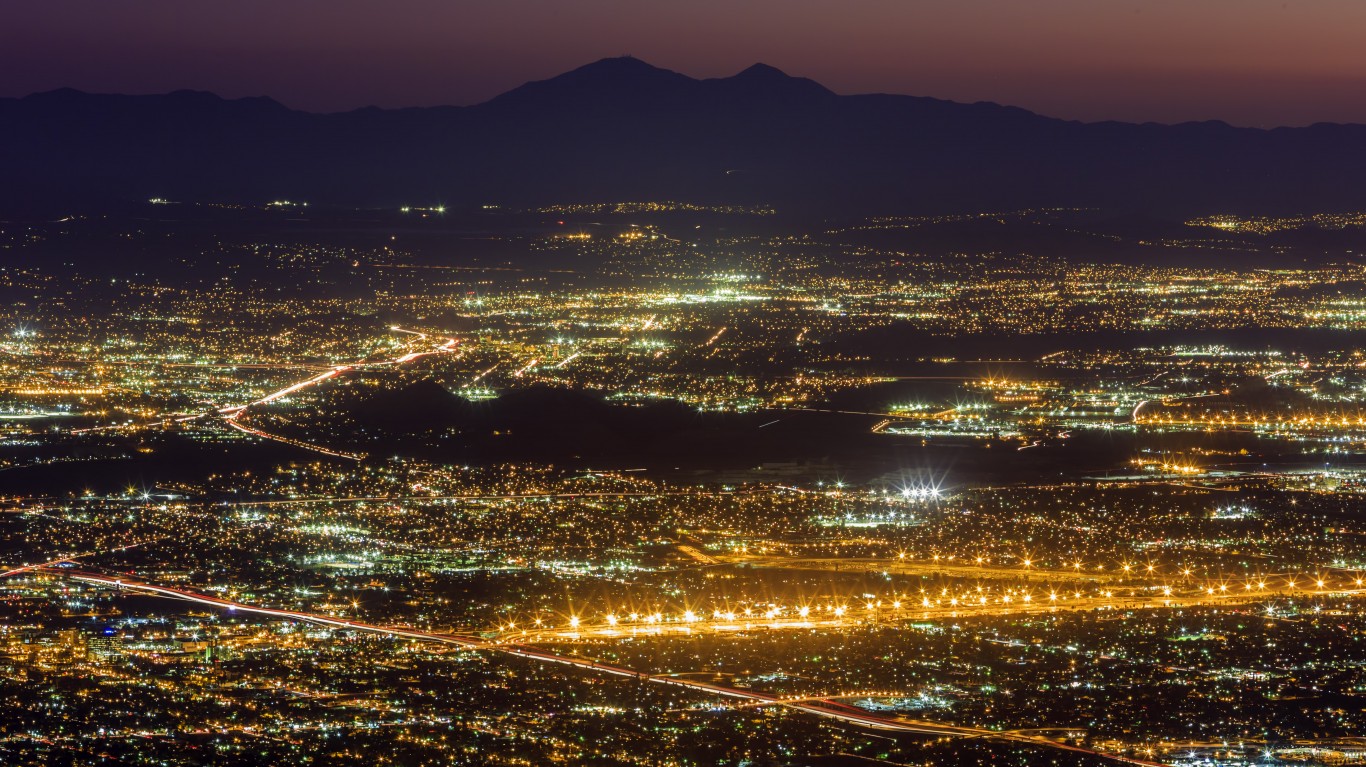
3. Riverside-San Bernardino-Ontario, CA
> Nighttime industries as share of employment: 2.7%
> Most concentrated nighttime industry: Snack and nonalcoholic beverage bars (10,176 employees)
> Total population: 4.6 million (155 per sq. mi.)
With a population of 4.6 million, Riverside is the 13th largest metropolitan area in the country. Even for one of the largest metropolitan areas, it is relatively spread out. There are 155 residents per square mile, less than in the majority of U.S. cities and a fraction of the average density among the 15 largest metropolitan areas.
Because nightlife tends to be more vibrant in denser neighborhoods and cities, Riverside’s low density helps explain its relative lack of nightlife. Nighttime establishments comprise just 1.6% of all businesses in the city, the 14th smallest share nationwide.
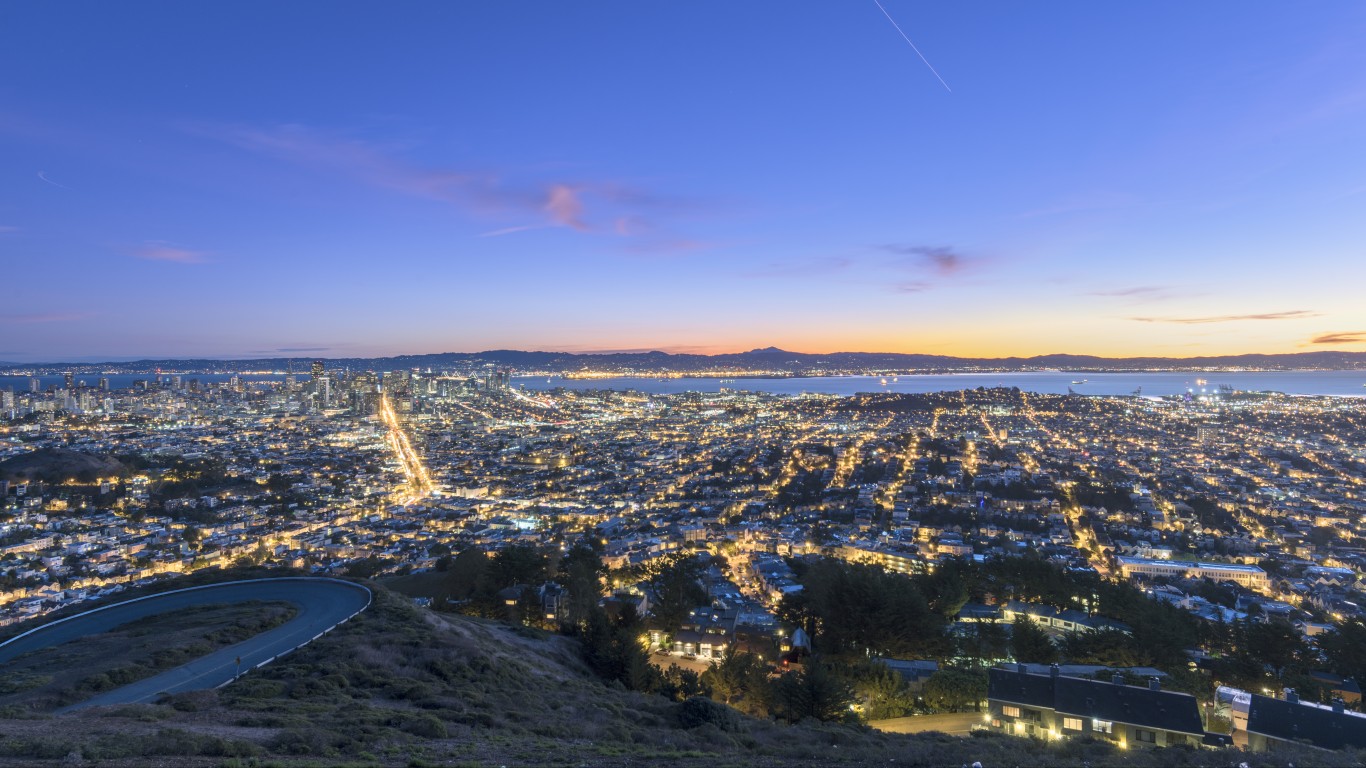
4. San Francisco-Oakland-Hayward, CA
> Nighttime industries as share of employment: 2.0%
> Most concentrated nighttime industry: Dance companies (486 employees)
> Total population: 4.7 million (1,755 per sq. mi.)
In 2003, San Francisco chartered the first Entertainment Commission in the United States. The Entertainment Commission consists of seven members and is responsible for working with venues, festivals, and events, as well as the community to regulate, promote, and enhance entertainment and nightlife throughout the city.
A March 2012 report from the San Francisco government on the impact of nightlife highlights the importance of city’s nighttime economy. According to the report, nightlife establishments generated $6 billion in economic activity in 2015. Bay Area patrons spent an average of $120 each on a night out.
[in-text-ad]

5. Phoenix-Mesa-Scottsdale, AZ
> Nighttime industries as share of employment: 0.9%
> Most concentrated nighttime industry: Sports teams and clubs (3,850 employees)
> Total population: 4.7 million (288 per sq. mi.)
With a population of 4.7 million, Phoenix is the 11th largest metropolitan area in the country. Compared to other large cities, however, Phoenix is relatively spread out. There are just 288 residents per square mile, a fraction of the average density among the 15 largest metropolitan areas.
Density helps boost nighttime economic activity, and the low concentration of people in the Phoenix area may be one reason the city has a smaller nighttime economy than other large cities. Just 0.9% of workers in Phoenix are employed in nighttime industries, less than a third of the 3.6% national figure.
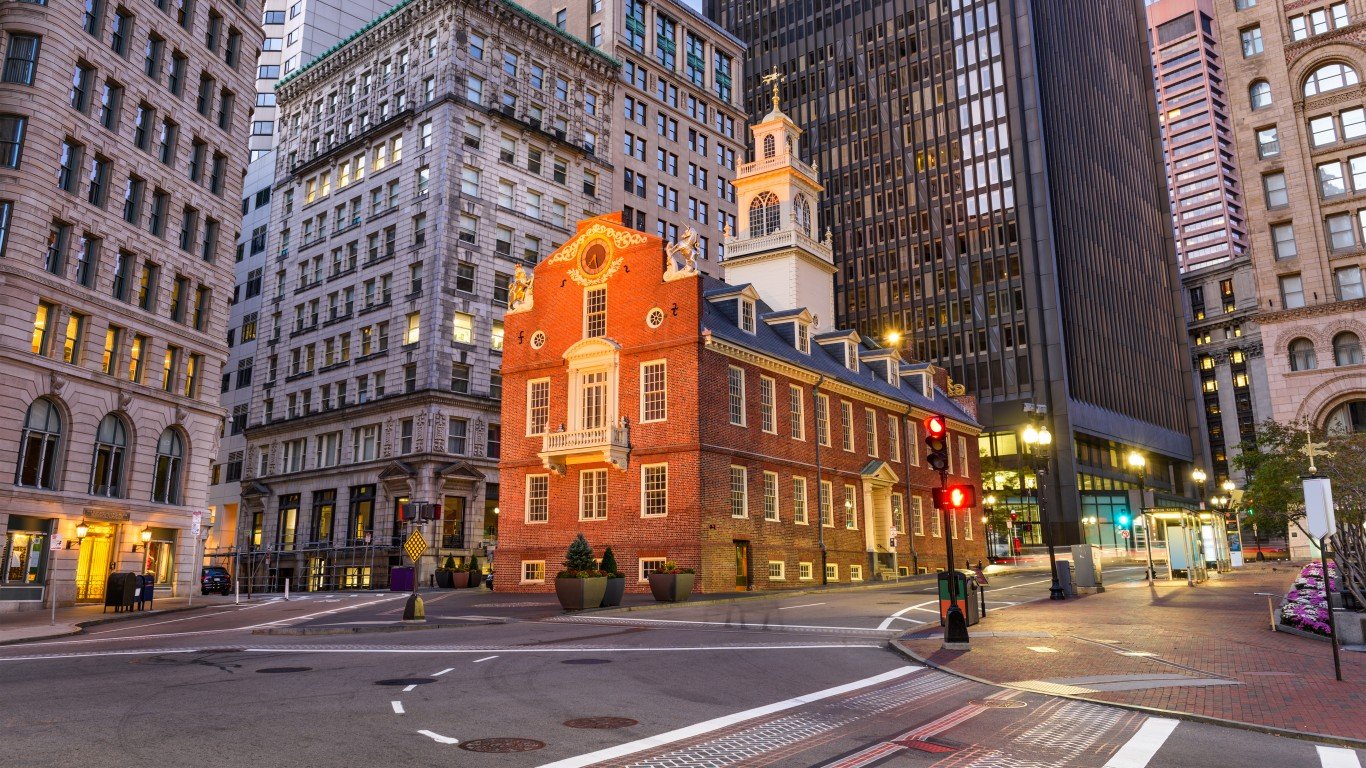
6. Boston-Cambridge-Newton, MA-NH
> Nighttime industries as share of employment: 3.1%
> Most concentrated nighttime industry: Snack and nonalcoholic beverage bars (26,133 employees)
> Total population: 4.8 million (1,305 per sq. mi.)
Home to some of the nation’s best universities, oldest taverns, and most extensive public transit systems, Boston has many of the qualities conducive to a strong nighttime economy. Some 21.4% of adults in the Boston metro area — the city with the heaviest drinkers in the state — report drinking excessively, more than the 18.0% of adults who report heavy drinking nationwide. Additionally, 13.4% of commuters in the metro area use public transit, the third largest share of any city. Efficient public transit helps connect late night patrons to nightlife establishments and promote nighttime economic activity.

7. Atlanta-Sandy Springs-Roswell, GA
> Nighttime industries as share of employment: 2.7%
> Most concentrated nighttime industry: Bowling centers (1,631 employees)
> Total population: 5.9 million (632 per sq. mi.)
In Atlanta, some of the most concentrated nighttime industries include bowling alleys, amusement arcades, and sports teams and clubs. Some 2.7% of workers in Atlanta are employed in nighttime establishments, more than in a majority of metro areas.
Atlanta has one of the latest last calls of any U.S. city. Bars close at 2:30 a.m., half an hour later than in a majority of the country. During the week of the 2019 Super Bowl, bars were permitted to stay open until 4 a.m. While extended drinking hours can contribute to increased drinking behavior, just 16.5% of adults in Atlanta drink excessively — among the least of any city.
Thank you for reading! Have some feedback for us?
Contact the 24/7 Wall St. editorial team.
 24/7 Wall St.
24/7 Wall St.


